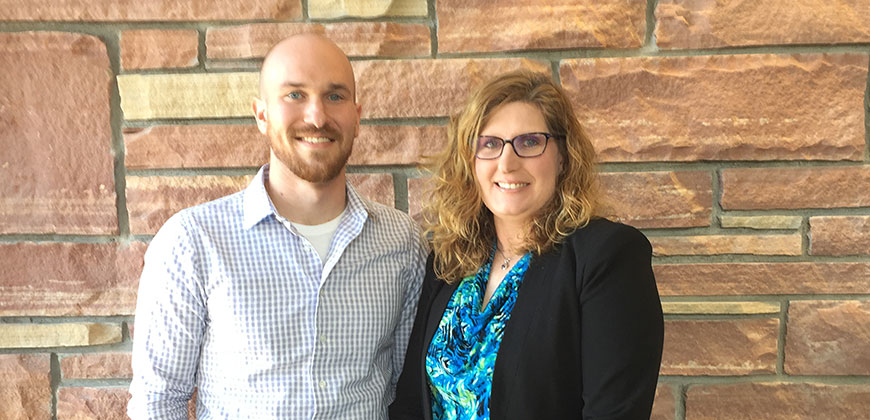
Graduate student Kevin Walters and Assistant Professor of Psychology Gwen Fisher have completed a study of working conditions in the Colorado cannabis industry.
The legalization of recreational cannabis in Colorado launched a booming statewide business – and like any industry, it’s the workers who’ve made it possible.
Who are these workers, what are their working conditions, and could those conditions be improved? In a first-of-its-kind study, Colorado State University industrial-organizational psychologists sought to find out.
Results of the study, “Work and Well-Being in the Colorado Cannabis Industry,” were published online in February, and were authored by Ph.D. student Kevin Walters and Assistant Professor of Psychology Gwenith Fisher, with colleagues at CSU and the Center for Health, Work and Environment at the Colorado School of Public Health. They conducted it as part of a pilot grant funded by the Mountain and Plains Education and Research Center (MAP ERC), which is supported by the National Institute for Occupational Safety and Health and jointly housed at CSU and the University of Colorado Anschutz Medical Campus. Walters is a trainee in the MAP ERC’s occupational health psychology graduate training program, which Fisher leads.
“Legalized recreational cannabis is spreading to other states, and in over half the country, [medical] cannabis is legal,” Walters said. “That could amount to thousands and thousands of workers. We really wanted to get the ball rolling on understanding their working conditions, as well as ways to improve them.”
The researchers’ report comes on the heels of a Colorado Department of Public Health and Environment report titled “Guide to Worker Safety and Health in the Marijuana Industry,” which is also intended to help the industry promote safe working environments.
The MAP ERC report contains physical safety recommendations as well as information about meaningfulness of the work, job satisfaction, perceived job security, and work and psychological stress.
“Our end goals were absolutely parallel – to try and improve working conditions for people in the cannabis industry,” Walters said. “It’s all different pieces of the same puzzle.”
Health and safety training varies
Among the results: a wide variability in worker training. About 46 percent of those surveyed reported receiving little to no workplace health and safety training. “Our hope is that by calling attention to this issue, that number will improve,” Fisher said.
Their study was based on an anonymous, online survey of 214 cannabis industry workers spread across more than 100 businesses along the Colorado Front Range. Workplace safety issues they reported on included pesticide exposure, skin or eye irritation, long hours trimming plants and air quality, as well as safety concerns of an all-cash business.
The study included a demographic profile of the industry. The majority of workers surveyed were younger, white males with some level of college education. One somewhat surprising result: When self-reporting their health on a scale of 1-5, the average score was 2.4 – in the “fair” range. “This is generally a population of young people, so for young people to have such a poor rating of their health is concerning,” Fisher said. The researchers surmise that the workers came to their jobs with pre-existing health conditions, given that about two-thirds of those surveyed reported holding medical cannabis cards.
Some of the study’s findings were also strongly consistent with existing literature in occupational health psychology – for example, workers in the study showed better outcomes in managing stress when they had supportive supervisors.
‘Supportive, tight-knit industry’
From the results, it was clear that employees found their work satisfying and meaningful – an environment that could facilitate buy-in of more widespread training programs for workers, the researchers noted. “It is a supportive, tight-knit industry with a strong sense of culture,” Fisher said.
To help standardize safety training, the researchers recommended focusing on unique cannabis industry hazards, such as those involved with growing, cultivating, trimming and selling; as well as general health and safety programs including ergonomics, emergency preparedness and the proper use of personal protective equipment.
Anecdotal reception to their study has been positive, Fisher added.
“I really want to emphasize that this industry is clearly full of people who care deeply about what they are doing, and why they are doing it, and they want to do the right thing,” she said. “Most of the people we talked to were open to whatever advice and recommendations we could offer on how they could protect their workforce.”
The MAP ERC study included co-authors Lili Tenney, of the Center for Health, Work and Environment in the Colorado School of Public Health, and Kurt Kraiger, a CSU professor in industrial organizational psychology.
CSU Institutional Review Board protocol number for the study: 002-16H.